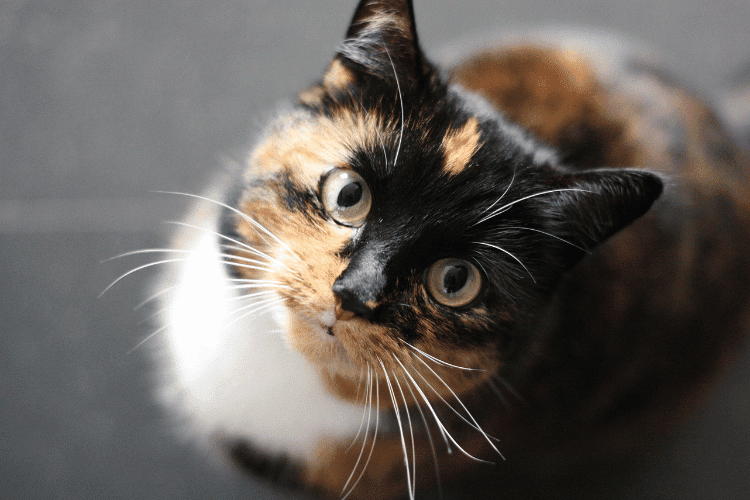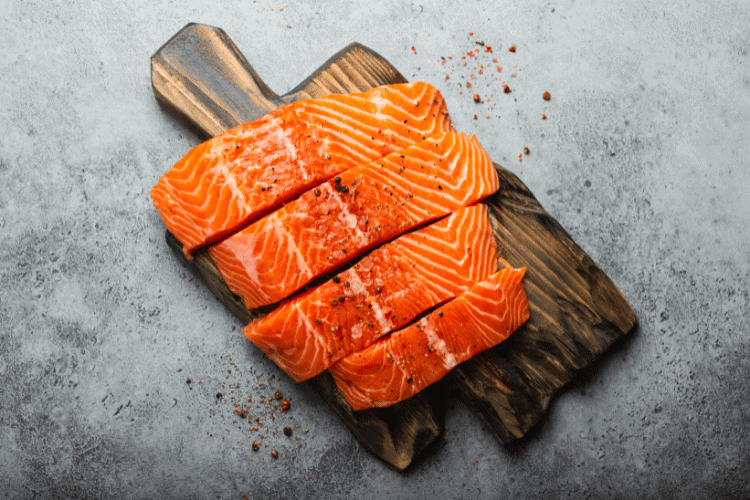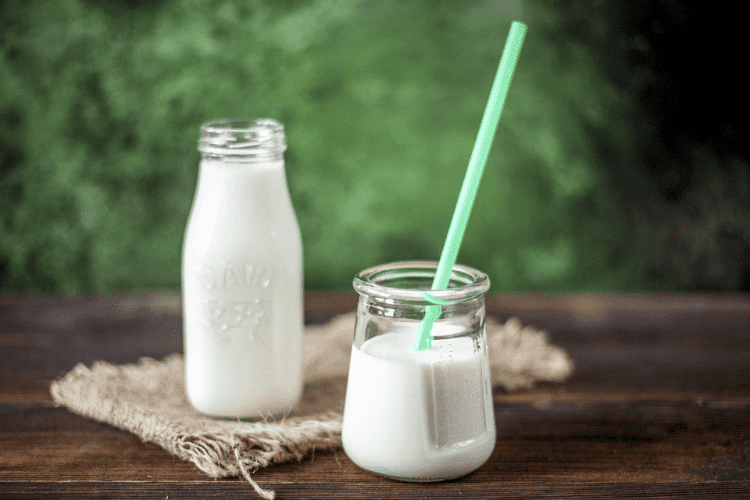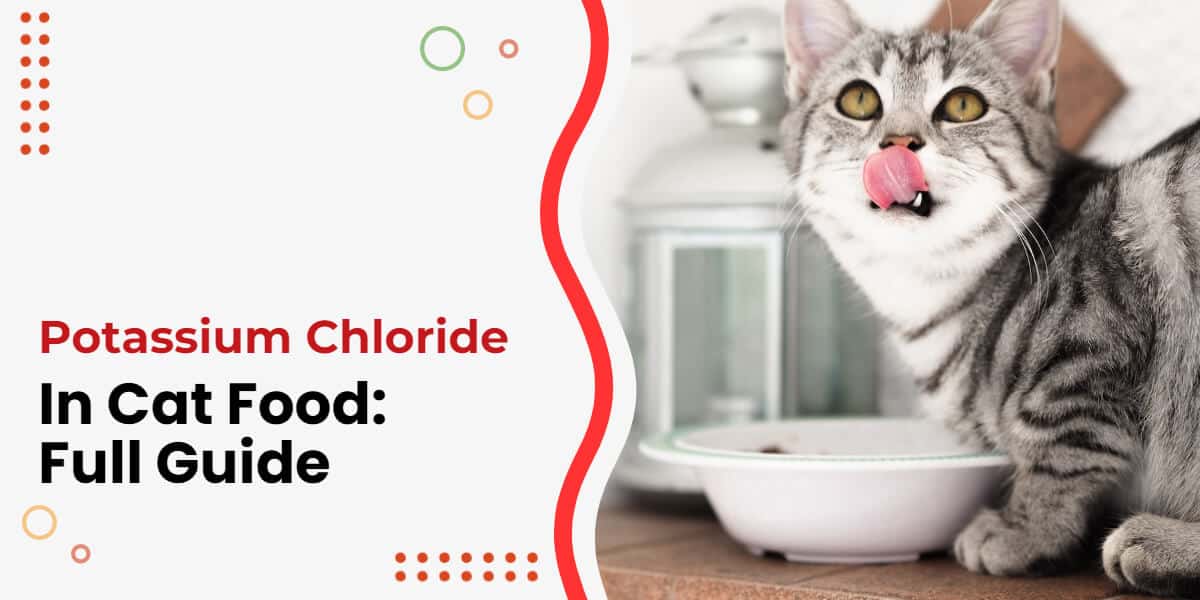Pet owners are often concerned about the ingredients in commercial pet food.
Looking at the most common cat food products, you might have noticed that they contain potassium chloride. So why is there potassium chloride in cat food?
Potassium chloride has many benefits for cats. It’s an essential mineral for many body functions and processes. In addition, it boosts the food’s flavor.
In this article, we’ll take a closer look at potassium chloride in cat food and how it affects our feline friends.

Table of Contents
What Is Potassium Chloride?
Potassium chloride is a naturally occurring salt derived from the sea or the ground. The salt consists of potassium and chlorine.
It’s also a colorless salt widely used in the food industry as a flavor enhancer and a replacement for standard sodium chloride.
Potassium Chloride in Cat Food
Potassium chloride is abundant in many pet food products, and it’s easy to see why. It supplies your pet with a lot of potassium and chloride.
For starters, potassium is vital for muscle growth, neural development, and heart function. On the other hand, chloride is essential to improve digestion and maintain the body’s normal pH.
Moreover, if your cat has potassium deficiency, supplements containing potassium come in handy to treat it. Let’s see how potassium benefits our cats.
1. Metabolism Booster
Potassium aids in extracting energy from nutrients to your cat’s body. How? It aids in breaking down carbohydrates and fats, which are essential energy sources for your cat.
As a result, potassium salts boost your cat’s metabolism. That way, your cat absorbs and digests nutrients faster.
2. Muscle Development
Potassium is an essential mineral for muscle growth. Plus, it helps regulate your kitten’s motor skills as it controls muscle relaxation and contraction.
Recommended: Here are the best Royal Canin Ultamino alternatives for cats
3. Neural Function
Potassium improves your cat’s cognitive abilities. That’s because it directly strengthens the neural connections between the brain and different body parts.
Therefore, supplying your cat with adequate potassium will help him stay sharp and active. Potassium also improves brain function, which enhances your cat’s memory and learning abilities.
Bone Health
Alongside calcium and phosphorus, potassium supports your cat’s teeth and bones. Potassium maintains the ideal pH levels in your cat’s body. Accordingly, your cat can retain proper calcium levels in his bones and blood.
Normal Potassium Levels in Cats
Even though potassium is an essential mineral for cats, ingesting too much or too little can be problematic. Potassium levels in your cat’s blood should be from 3.5 to 5.1 mEq/L.
That means your cat will suffer from hyperkalemia if potassium levels are above 5.1 mEq/L. On the other hand, potassium levels lower than 3.1 mEq/L lead to hypokalemia.
So what can affect the level of potassium in your cat?
Generally speaking, the amount of potassium your cat ingests should equal the amount lost in the kidneys and GIT. That way, potassium levels are up to par. However, this is not the case if your cat suffers from a medical condition.
Many illnesses can affect potassium levels in your cat. The most common is chronic kidney failure. Other diseases such as diabetes, hyperadrenocorticism, hyperthyroidism, and hyperaldosteronism can also lower potassium levels.
How to Tell if Your Cat Has Potassium Disorders?
Unfortunately, it’s difficult to notice the signs of hypokalemia or hyperkalemia in your cat. Blood monitoring remains the only method to determine if your cat has adequate potassium levels in his blood.
However, there are some telltale signs to look for if you suspect abnormal potassium levels.
Related: What is Sodium Selenite in cat food?
Signs of Hypokalemia
The most common sign among cats suffering from hypokalemia is muscle weakness, specifically in their necks. Cats who suffer from hypokalemia will most likely have difficulty lifting their heads straight.
Other signs include the following:
If you notice these signs on your cat, you should take him to the vet for examination. Your vet will most likely perform blood monitoring tests to determine potassium levels.
In addition, he’ll examine your cat for any possible underlying conditions that might cause hypokalemia, such as diabetes and kidney failure. The treatment often involves potassium supplements besides treating the underlying cause of the potassium deficiency.
Signs of Hyperkalemia
If your cat suffers from hyperkalemia, he might not give you any symptoms until the condition is severe. These symptoms include:
If your cat shows any of these signs, you must immediately take him to the vet. Similar to hypokalemia, the condition is diagnosed through blood tests and ECG.
The treatment depends mainly on the underlying cause—kidney failure, urinary tract blockage, diabetes, or Addison’s disease.
Sources of Potassium Chloride for Cats
The majority of commercial cat food contains decent amounts of potassium chloride. Popular pet food brands like Science Diet, Lams, Wellness, and Purina Pro Plan use potassium chloride salt in their products.
Still, since cats can be picky, you can always give them natural sources of potassium. Let’s take a closer look at some of the most potassium-rich foods.
1. Salmon

Kittens love salmon, and fortunately, it’s a highly nutritious food for them as well. It contains high amounts of proteins, omega-3 fatty acids, and potassium. It’s worth noting that a half-salmon filet contains around 689 milligrams of potassium.
That said, you should take care not to overfeed your cat with salmon, as cats need only 330 milligrams of potassium per day.
2. White Beans
Even though it’s not recommended to feed your cat beans daily, white beans are a great source of potassium, with over 422 milligrams in half a cup.
Occasionally, you can cook white beans and serve them plain to your cats as a natural source of potassium.
3. Potatoes
Potatoes contain tons of potassium, with over 610 milligrams in one peeled potato. You can give your cats small bites of cooked and washed potatoes as a potassium source.
4. Chicken
It’s no surprise that chicken is one of the cats’ favorite foods. Alongside zinc, vitamins, and proteins, chicken is rich in potassium.
One cup of cooked chicken contains around 312 milligrams of potassium, which is equivalent to the daily cat potassium requirement. When serving chicken to your cat, ensure it’s adequately cooked with no bones left in.
5. Meat
Cats are obligate carnivores, and they adore the taste of meat. Luckily, meat isn’t only a major protein source. It contains a decent amount of potassium too.
Three ounces of meat provide your cat with over 260 milligrams of potassium. Lamb, duck, turkey, and beef are excellent choices to feed your cats.
Other Essential Minerals for Cats
While shopping for cat food, you should always check the ingredients of the product to ensure you’re supplying your cat with enough minerals. We’ve listed the most vital minerals to your cat’s health.
1. Iron
Iron is widely used in pet food and supplements. It’s a crucial mineral for all animals as it carries oxygen through the blood and to all body parts. That way, your cat has enough energy to stay healthy and active.
Alongside commercial cat food, you can occasionally provide your cat with natural sources of iron. These iron sources include liver, lean meat, fish, grains, and legumes.
2. Sodium
Sodium facilitates the delivery of nutrients to cells and eliminates waste products from the body.
The AAFCO recommends that cat food contain at least 0.2% sodium to ensure proper growth and development for your cat.
It’s also worth noting that cat diets high in sodium can temporarily increase thirst and water intake. However, cats get rid of excess sodium through urination.
3. Calcium

Calcium aids in the production of milk in female cats. That’s why a calcium-rich diet is crucial for mothers to feed their young kittens. Moreover, calcium helps in other essential body functions, such as bone growth, muscle contraction, nerve conduction, and blood coagulation.
4. Chloride
Chloride helps your cat maintain an appropriate alkali balance in his body. It stimulates the secretion of HCL in the stomach, facilitating food digestion. The AAFCO recommends that cat food have a minimum chloride content of 0.3%.
Users Also Read: 5 Royal Canin Ultamino Cat Alternatives
5. Magnesium
Magnesium is an essential mineral that aids in the absorption and utilization of vitamins and minerals in your cat’s body. It’s also necessary for enzyme activity, bone growth, and protein synthesis.
FAQs
Is Potassium Chloride Good For Cats?
Supplements that contain potassium, such as potassium chloride and potassium gluconate, are often prescribed to pets that suffer from potassium deficiencies.
If your cat has kidney disease, he won’t be able to absorb the normal amount of potassium. That’s why your vet might prescribe supplements to reach the desired potassium levels.
Why Is Potassium Chloride In Cat Food?
Potassium chloride is a colorless salt often used as a food additive in cat food to boost the flavor. It’s similar to our table salt, which is chemically known as Sodium chloride.
The main reason behind using potassium-derived salt is to add essential minerals and vitamins to the cat’s diet. Moreover, animals show better potassium absorption eating potassium chloride compared to sodium chloride.

